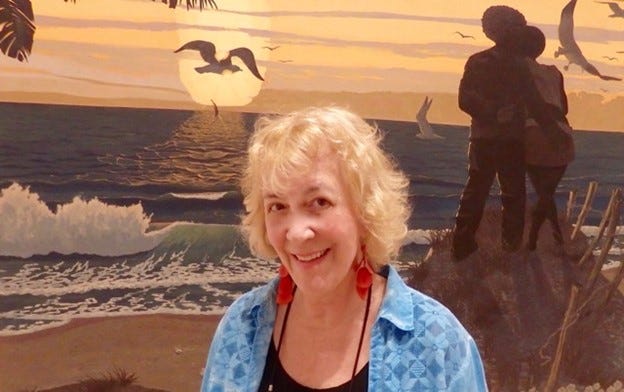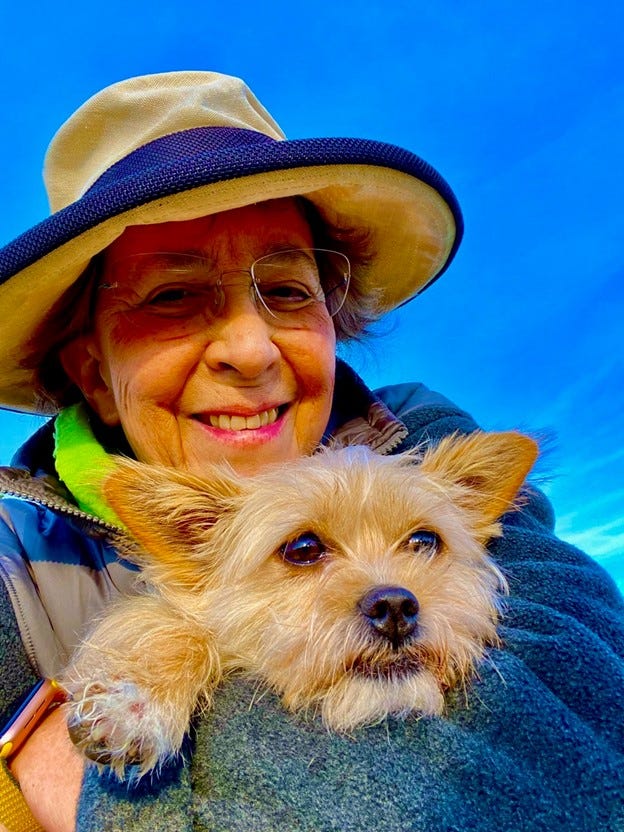If Jan Baross’s poignant-yet-hilarious novel Bye-Bye Bakersfield is any indication of what 2023 has in store for readers, book-lovers are in for a good year.
I had the pleasure and honor of working with Jan last year when she hired me to do a developmental edit of this remarkable novel. Call it auto-fiction, or fiction-based-on-real-life, but Jan’s colorful recollections of growing up Jewish in post-World War II Bakersfield, California weaves heartbreak and humor with a deft hand.
Bye-Bye Bakersfield is just the latest example of her artistic output (she’s a visual artist, a playwright, a film-maker and critic), and it’s unsurprising that Ursula Le Guin once called Jan’s earlier award-winning novel, Jose Builds a Woman, “a wild ride through an extravagantly carnal Mexico of the imagination.”
I interviewed Jan recently, so read on for more scoop on her background and the book:
SV: Congratulations on the publication of your novel, Bye-Bye Bakersfield, a novel inspired by your own unique upbringing in the Central Valley. Can you give us a brief synopsis of the book, and why you chose to fictionalize your story rather than go the memoir route?
JB: synopsis: The young girl narrator’s challenging story begins in 1950’s Bakersfield, California. The sweltering town is a small outpost of primitive politics, aggressive agriculture and a land swollen with oil, where the family had to relocate for the father’s job. “If you want to survive in this town, don’t tell anyone you’re Jewish. Or a Democrat,” warns her Mother. With humor, horror and grit, the young girl and her family negotiate the quicksand of an ultra-conservative society where they clearly don’t belong.
Memories at this age are fictional at best and hard to come by. Some images of youthful experiences that remain are vivid enough to spark a story. That’s the fun. To take one bright picture and mold it into a drama, build the tension, texturize the characters into some kind of consistency and appeal. I want to take credit for being as strong and resolute and funny as my character, but, in truth, I think I was either running scared or clueless during a long and adventurous childhood that still feels very close.
SV: One of the (many) things I love about your novel is the marriage of humor and heartbreak. What role, if any, do you think examining lived experience plays in achieving that balance?
JB: If you live long enough, it all seems a little funny. My grandmother said there’s no tragedy in things if you can laugh. But the impetus for each story is kicked off by some kind of heartbreak. Like, getting my head shaved because of ringworm and then having to face my new first grade schoolmates. I can remember the shame of being bald, the way the scarf I wore felt on my scalp. When brutally teased, the little heroine asks herself, what would her hero John Wayne do. Then it gets funny. A revenge scenario on a grammar school level. The humor comes in her unexpected responses to life’s curve balls. In real life, though, I hid and didn’t fight back. The payback for examining and writing about lived experiences allows you to be the heroine, balance out the horrors of childhood. Or, as Grandma Bertha said, “Change your words, darling, and you change your catastrophe.”
SV: You have an enviable talent for words AND pictures. Your prose is especially evocative and scenic. Tell us a bit about your life as a visual artist and how that informs your writing.
JB: I’ve always thought in pictures. I can’t think if it’s just words. The two have always been married in my mind. If a friend reminds me of a dinner we had last year, I have no memory of it or anything unless I can see the picture of us eating together at that time and place. If I can’t call up that image, my mind is a blank.
Like, if I call up an image of my young days on the high school tennis team, I’m back there. I’m in her body. The story takes off in my imagination, with one tendrilled bit forming into the whole plot. Then I can describe what I see. It’s like a play going on and I am relating the details. Not necessarily the true story, but one that spreads and seeds itself and makes some kind of sense through a ton of rewrites.
As for art, I started drawing with crayon at age two all over my mother’s new wallpaper. Drawing then, and now, immediately calms me, focuses my entire mind, and allows me a great peace. Some of the bases I covered beside painting, illustration and cartoons, was animation. I still illustrate the posters and programs for Portland’s Irish Theater: The Corrib. And the play festival posters and programs for my playwright friends in San Miguel de Allende, Mexico. I am slowly learning how to use the Procreate App so I can design the covers for my own books. I love it. I have a lot more covers than I do books.
SV: Any tips you’d like to add for our aspiring authors?
JB: All I can say about writing really is, do it if it feels good. I do it because it makes me feel useful, gives me purpose, excites me. And relieves anxiety and doubt, because it is my world, and in it, I am god.







It was my pleasure to be in a writing group with Jan for a short time and read pages from this novel! Her writing delighted me then, and I'm looking forward to reading the finished book. Congratulations, Jan, on Bye-Bye Bakersfield!
Jan Baross has been both an inspiration and a consultant for me. This interview highlights her great gifts. I can hardly wait to read the book. Congratulations, Jan. . . and Suzy for this thoughtful interview.